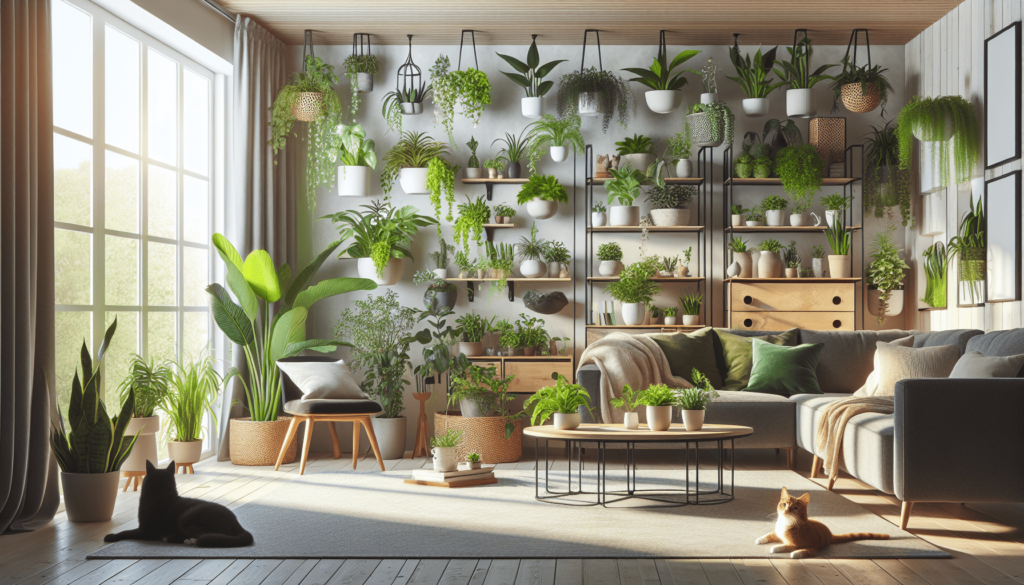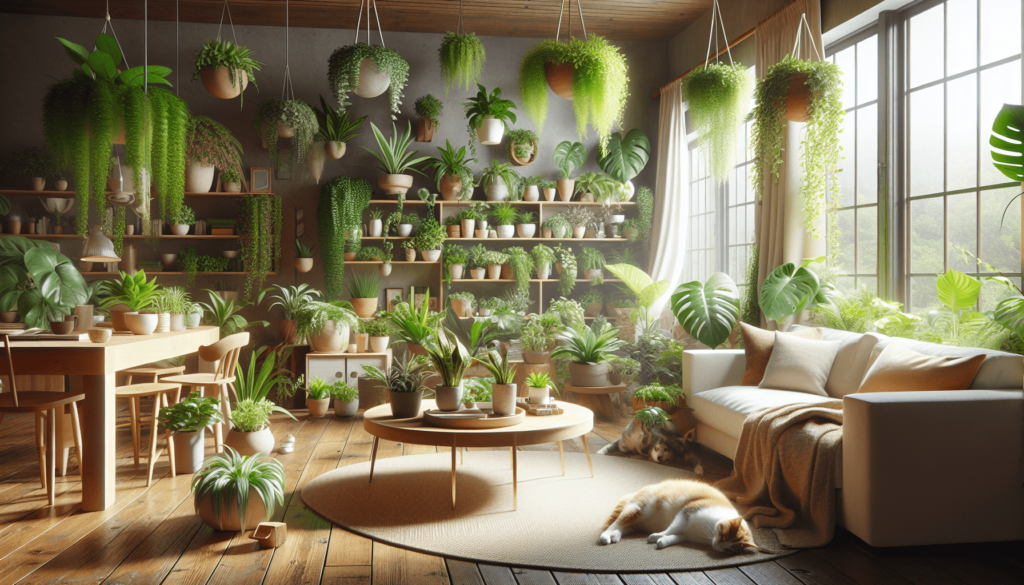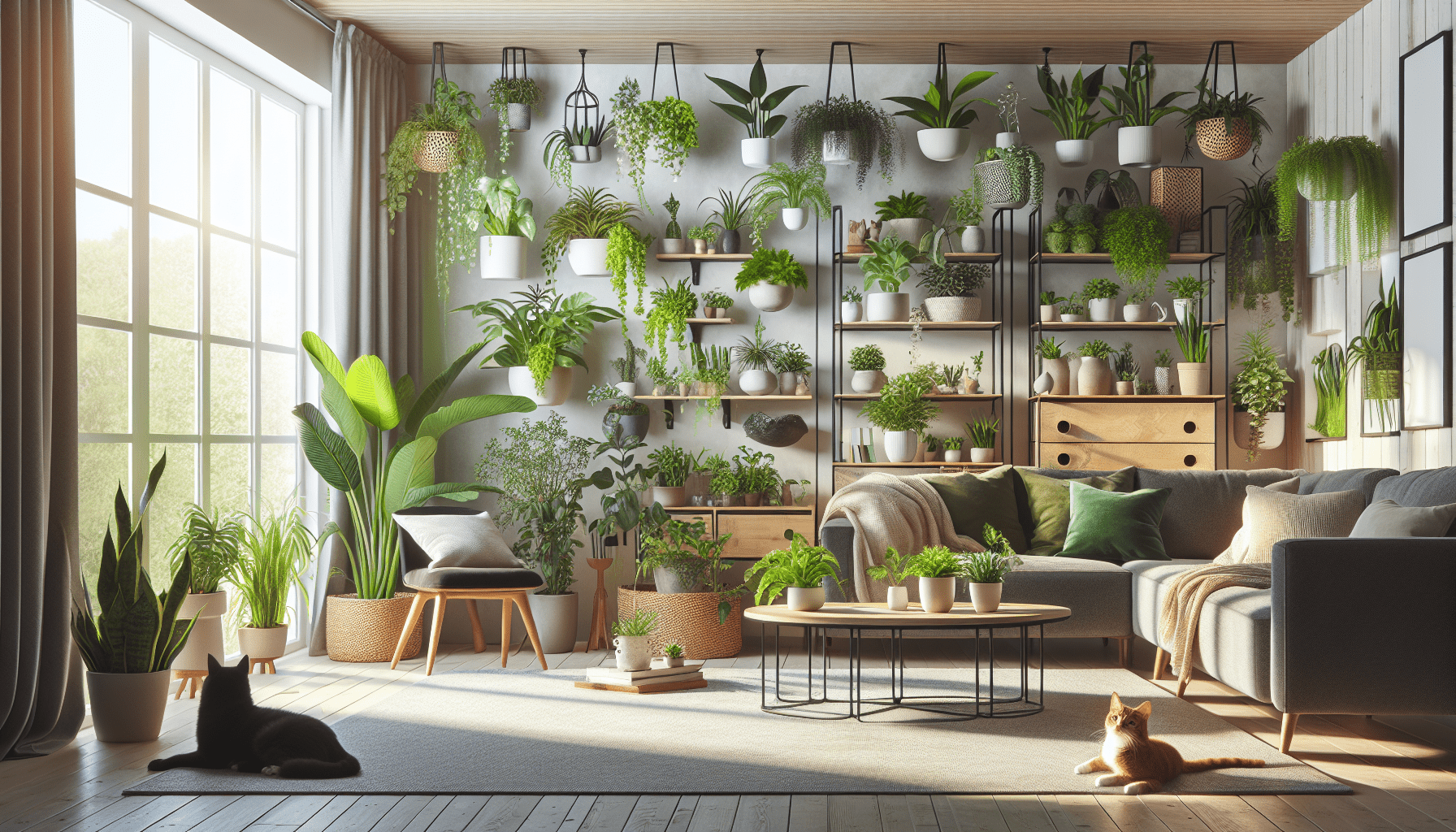Looking to add some greenery to your home but worried about allergies and your furry friends? You’re in the right place! “10 Pet-Friendly Houseplants for Allergy Sufferers” explores a delightful selection of plants that not only purify the air but are also safe for your pets and gentle on your allergies. These top picks will help you create a vibrant, healthy living space without compromising the well-being of your beloved animals or your own comfort. Have you ever wanted to add some greenery to your home but worried about the impact it might have on your pets or allergies? Worry no more! With the right selection of houseplants, you can enjoy a lush indoor garden that is safe for both your furry friends and your health. In this article, we will explore the top 10 pet-friendly houseplants for allergy sufferers. You’ll learn which plants are safe, low allergenic, and still stunning to look at. Let’s dive in!
Why Choose Pet-Friendly and Allergy-Friendly Plants?
Houseplants are fantastic at improving indoor air quality, adding natural beauty, and enhancing your home decor. However, many plants can be toxic to pets or could exacerbate allergies. Finding a balance between beauty, safety, and allergy considerations is crucial.
Cats and dogs are curious creatures who may chew on leaves or dig in pots. Some plants can cause digestive upset, skin reactions, or worse if ingested. Furthermore, if you suffer from allergies, you’d want plants that don’t release a lot of pollen or other allergens.
Choosing the right houseplants can enhance your living space without compromising the health of your pets or yourself.
Top Pet Allergy-Friendly Houseplants
Here are the best houseplants that are friendly to both pets and allergy sufferers. Each plant on this list is non-toxic to pets and is either hypoallergenic or suitable for allergy sufferers due to its minimal pollen production.
1. Spider Plant (Chlorophytum comosum)
Spider plants are a popular choice because they are incredibly easy to care for and propagate. They have long, arching leaves that are green with white stripes.
Pet Safety: Non-toxic to dogs and cats. Allergy Friendly: They are effective at removing toxins and are known for their air-purifying abilities, which can alleviate some allergic reactions.
Care Tips:
- Light: Prefers bright, indirect light.
- Water: Keep soil slightly moist, allowing the top inch to dry out between watering.
- Humidity: Enjoys moderate humidity.
2. Boston Fern (Nephrolepis exaltata)
Boston ferns are lush and elegant with their feathery fronds. They add a touch of greenery that is both safe for pets and great for people with allergies.
Pet Safety: Non-toxic to dogs and cats. Allergy Friendly: Known for their ability to filter out air pollutants, which can be beneficial for allergy sufferers.
Care Tips:
- Light: Bright, indirect light.
- Water: Keep soil consistently moist, but not soggy.
- Humidity: High humidity. Mist regularly or use a humidifier.
3. Areca Palm (Dypsis lutescens)
Also known as butterfly palm, areca palm is a beautiful and non-toxic plant that can reach up to 7 feet indoors.
Pet Safety: Non-toxic to dogs and cats. Allergy Friendly: This plant helps improve indoor air quality, which can be beneficial for allergies.
Care Tips:
- Light: Prefers bright, indirect light.
- Water: Water when the top inch of soil is dry.
- Humidity: Prefers medium to high humidity.
4. Parlor Palm (Chamaedorea elegans)
Parlor palms are excellent indoor plants with their elegant, arching fronds, and they can thrive under low light conditions.
Pet Safety: Non-toxic to dogs and cats. Allergy Friendly: It helps in removing pollutants, making the air easier to breathe for allergy sufferers.
Care Tips:
- Light: Low to bright, indirect light.
- Water: Water when the top inch of soil is dry.
- Humidity: Medium humidity.
5. Baby Rubber Plant (Peperomia obtusifolia)
The baby rubber plant is a small, compact plant with glossy, thick leaves that can thrive in a variety of light conditions.
Pet Safety: Non-toxic to dogs and cats. Allergy Friendly: This plant doesn’t produce significant pollen, making it suitable for allergy sufferers.
Care Tips:
- Light: Bright, indirect light but tolerates low light.
- Water: Allow the soil to dry out between watering.
- Humidity: Average household humidity is sufficient.
6. Calathea (Calathea spp.)
Calatheas are known for their strikingly beautiful leaves and ability to thrive in low light, making them a perfect addition to any room.
Pet Safety: Non-toxic to dogs and cats. Allergy Friendly: These plants do not release allergen-prone pollen.
Care Tips:
- Light: Low to bright, indirect light.
- Water: Keep soil evenly moist.
- Humidity: High humidity.
7. Haworthia (Haworthia spp.)
Haworthias are small succulent plants, easy to care for and perfect for beginners. Their rosette shape and patterned leaves make them an attractive choice.
Pet Safety: Non-toxic to dogs and cats. Allergy Friendly: They release minimal pollen and are generally non-reactive.
Care Tips:
- Light: Bright, indirect to direct light.
- Water: Water sparingly, allowing soil to dry between watering.
- Humidity: Low to average humidity.
8. Bamboo Palm (Chamaedorea seifrizii)
Bamboo palms can grow quite tall and are ideal as floor plants, adding tropical vibes to your indoor space.
Pet Safety: Non-toxic to dogs and cats. Allergy Friendly: Effective at improving air quality, reducing indoor allergens.
Care Tips:
- Light: Prefers bright, indirect light but can tolerate lower light conditions.
- Water: Keep soil slightly moist.
- Humidity: Likes high humidity.
9. Echeveria (Echeveria spp.)
These rosette-shaped succulents are hardy and beautiful, making them perfect for novice gardeners.
Pet Safety: Non-toxic to dogs and cats. Allergy Friendly: They produce minimal pollen and are suitable for allergy sufferers.
Care Tips:
- Light: Bright, direct light.
- Water: Allow soil to dry between watering.
- Humidity: Low humidity.
10. Phalaenopsis Orchid (Phalaenopsis spp.)
Phalaenopsis Orchids, also known as moth orchids, are elegant plants with stunning blooms that can last for months.
Pet Safety: Non-toxic to dogs and cats. Allergy Friendly: Produce minimal pollen and purify air effectively.
Care Tips:
- Light: Bright, indirect light.
- Water: Water thoroughly when the growing medium is almost dry.
- Humidity: Prefers higher humidity; mist regularly.

Care Tips for Pet-Friendly and Allergy-Friendly Houseplants
Each plant has unique requirements, but there are some general tips that will help keep your houseplants thriving:
-
Proper Light: Understanding the type of light your plant needs is crucial. Some plants thrive in bright, direct sunlight, while others prefer low light conditions.
-
Soil and Potting: Use the right type of soil specific to your plant. Ensure that the pot has proper drainage to prevent root rot.
-
Watering: Over-watering or under-watering can stress your plant. Let the soil dry slightly between watering for most plants.
-
Humidity: Many indoor plants appreciate higher humidity levels. You can use a humidifier or group plants together to create a micro-environment.
-
Cleaning Leaves: Dust on leaves can inhibit photosynthesis. Gently wipe leaves with a damp cloth periodically to keep them clean and shiny.
-
Fertilizing: Use appropriate fertilizers during the growing season to promote healthy growth. Follow the specific needs for each plant type.
Understanding Your Pets’ Safety
It’s important to monitor your pets around houseplants initially. While the plants listed are non-toxic, overeating any plant material could still lead to an upset stomach. If you notice your pet chewing on plants frequently, consider moving the plants to a less accessible spot or using pet deterrent sprays.
Helpful Chart: Quick Reference for Pet-Friendly Houseplants
| Plant Name | Pet Safety | Light Needs | Watering Frequency |
|---|---|---|---|
| Spider Plant | Non-toxic | Bright, indirect | Slightly moist |
| Boston Fern | Non-toxic | Bright, indirect | Consistently moist |
| Areca Palm | Non-toxic | Bright, indirect | Top inch dry |
| Parlor Palm | Non-toxic | Low to bright, indirect | Top inch dry |
| Baby Rubber Plant | Non-toxic | Bright to low, indirect | Dry between watering |
| Calathea | Non-toxic | Low to bright, indirect | Evenly moist |
| Haworthia | Non-toxic | Bright to direct | Dry between watering |
| Bamboo Palm | Non-toxic | Bright, indirect | Slightly moist |
| Echeveria | Non-toxic | Bright, direct | Dry between watering |
| Phalaenopsis Orchid | Non-toxic | Bright, indirect | Almost dry growing medium |

Making Your Home a Safe Haven
Adding houseplants to your home can provide not only aesthetic value but also health benefits. By choosing pet-friendly and allergy-friendly plants, you ensure that your living environment is safe for everyone, furry friends included.
Tips for Allergy Sufferers
- Choose hypoallergenic plants: Look for plants that produce minimal pollen and won’t trigger allergies.
- Maintain clean air: Use air purifiers in addition to houseplants to maintain indoor air quality.
- Regular Cleaning: Keep your plants and their pots clean to prevent mold buildup, which can be an allergen.
- Avoid Strong Fragrant Plants: Some people might react to strong scents. Stick to plants with low to no fragrance if you have scent sensitivities.
Keeping Plants Out of Reach
Placing plants in hard-to-reach areas can be an effective way to keep your pets from nibbling on them. Alternatively, hanging planters or wall-mounted planters can add greenery to your home safely and stylishly.
Conclusion
Bringing houseplants into your home doesn’t have to be a risky endeavor for your pets or your allergies. With careful selection, you can have a vibrant, green space filled with plants that are both safe for your furry friends and easy on your allergies. From the air-purifying Spider Plant to the elegant Phalaenopsis Orchid, these top 10 pet-friendly houseplants offer a perfect mix of beauty and safety. Happy planting!
